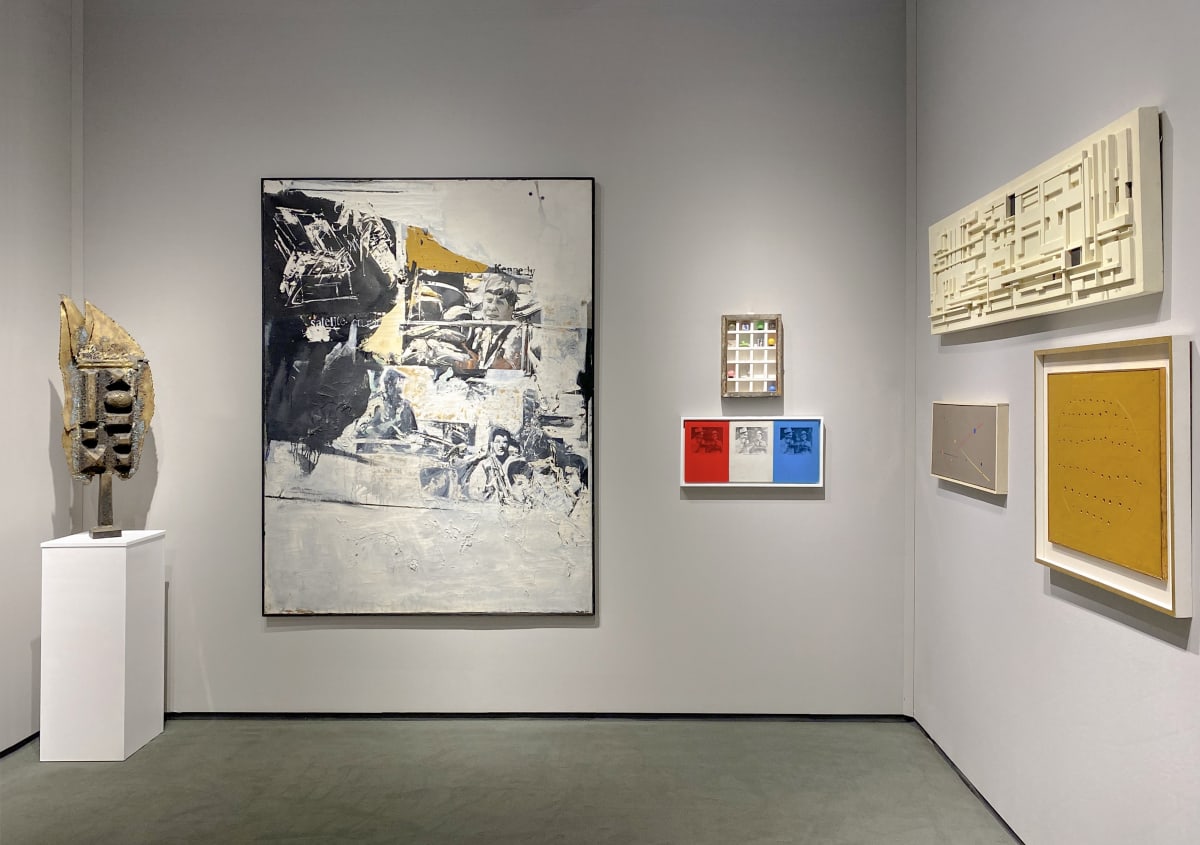Joseph Cornell American, 1903-1972
Overview
An untrained artist, Joseph Cornell (b. 1903 Nyack - d. 1972 New York, United States) spent the majority of his life in his mother’s house caring for her and his disabled brother in Queens obsessively collecting a vast archive of paper ephemera and small trinkets from flea markets and second hand book stores on an array of subjects that fascinated him such as Hollywood, the Ballet, Astronomy, Butterflies and Renaissance Italy. Inspired by Max Ernst he used the Surrealist technique of unexpected juxtaposition to compile these collections into collages and most famously his signature glass-fronted ‘shadow boxes’; dream-like miniature tableaus that represented an escape of sorts for their reclusive creator- as well as the viewer.
His early collages appeared in the groundbreaking Surréalisme show at the Julien Levy Gallery in Manhattan, 1932, alongside Dalí and Duchamp, and his first shadow box, Untitled (Soap Bubble Set), was in Fantastic Art, Dada and Surrealism, a major exhibition at the Museum of Modern Art in 1936. In 1939, his art was described by Salvador Dalí as "the only truly Surrealist work to be found in America", he was also a forerunner of appropriation art and Pop art, inspiring such as artists as Andy Warhol and Robert Rauschenberg.
Cornell’s other major medium was film; collages of the moving image. Over his career, he made a major contribution to the development of cinema; he was described by the film critic J. Hoberman as a "progenitor of American avant-garde film.".
In 1967, he was the subject of two major retrospectives, at the Pasadena Art Museum, USA and the Guggenheim, New York- only the fourth American artist at the time to do so, and has been exhibited extensively since including at the Royal Academy of Arts, London, Wanderlust in 2015.
Works
Exhibitions
News




